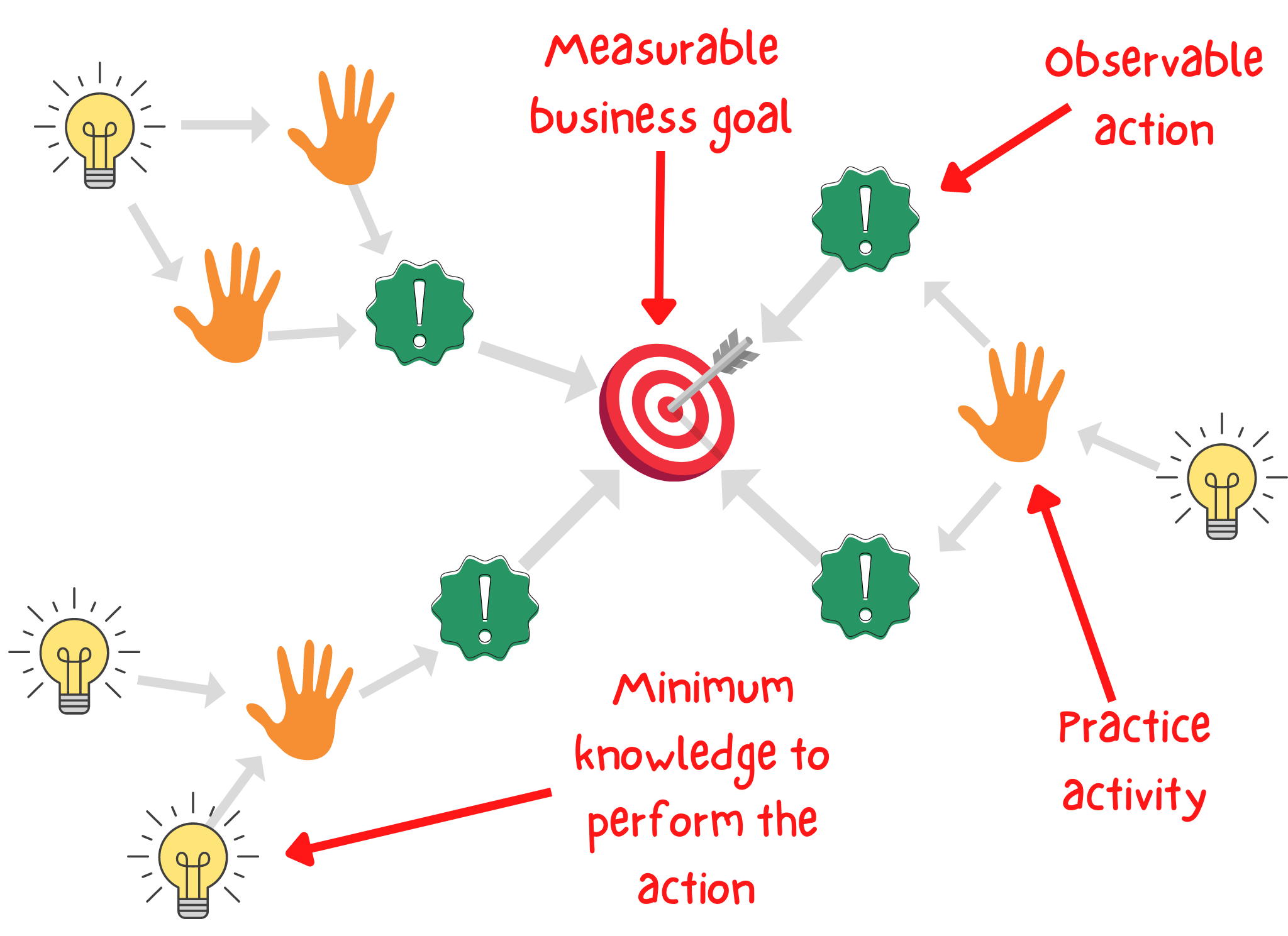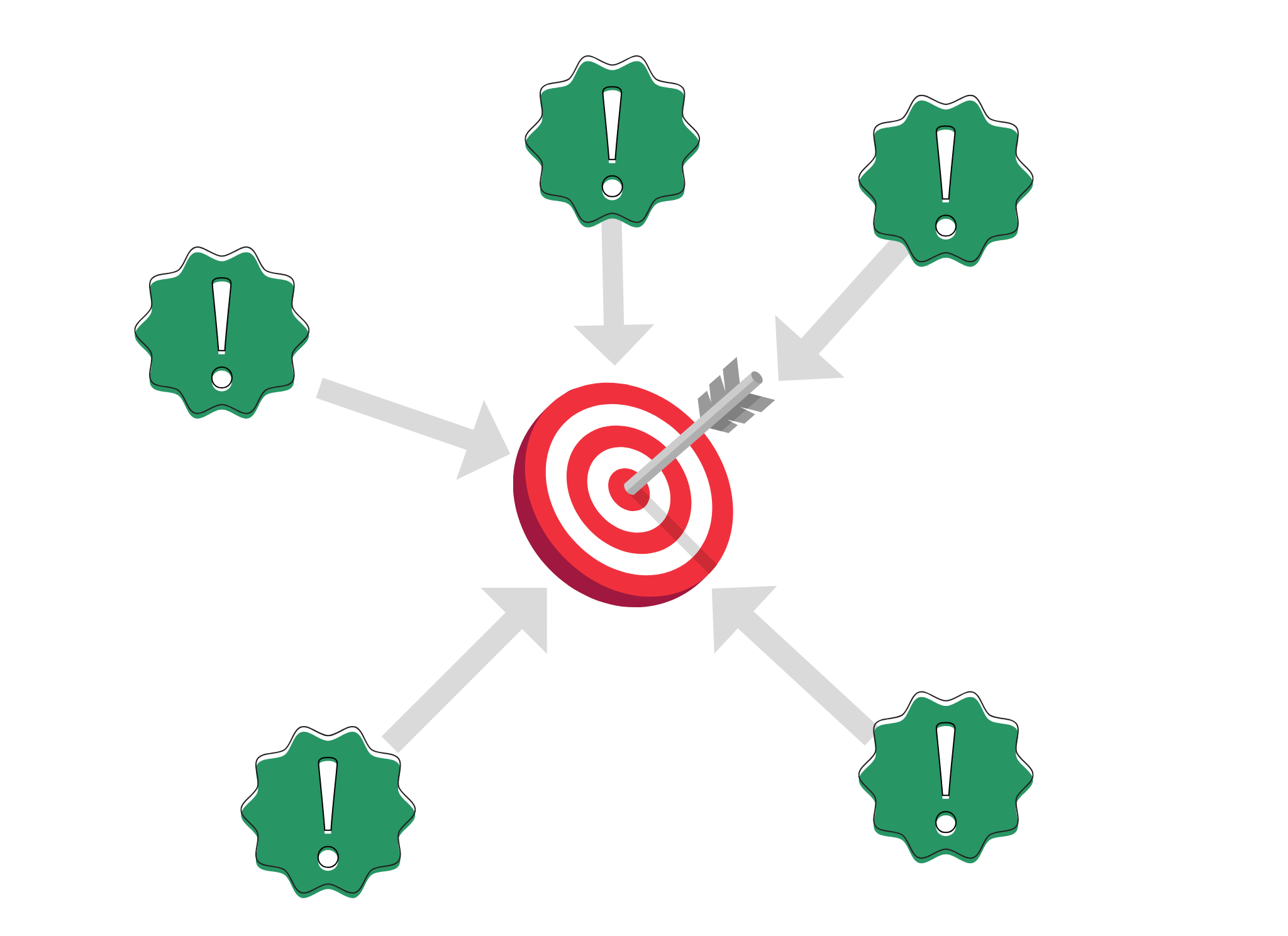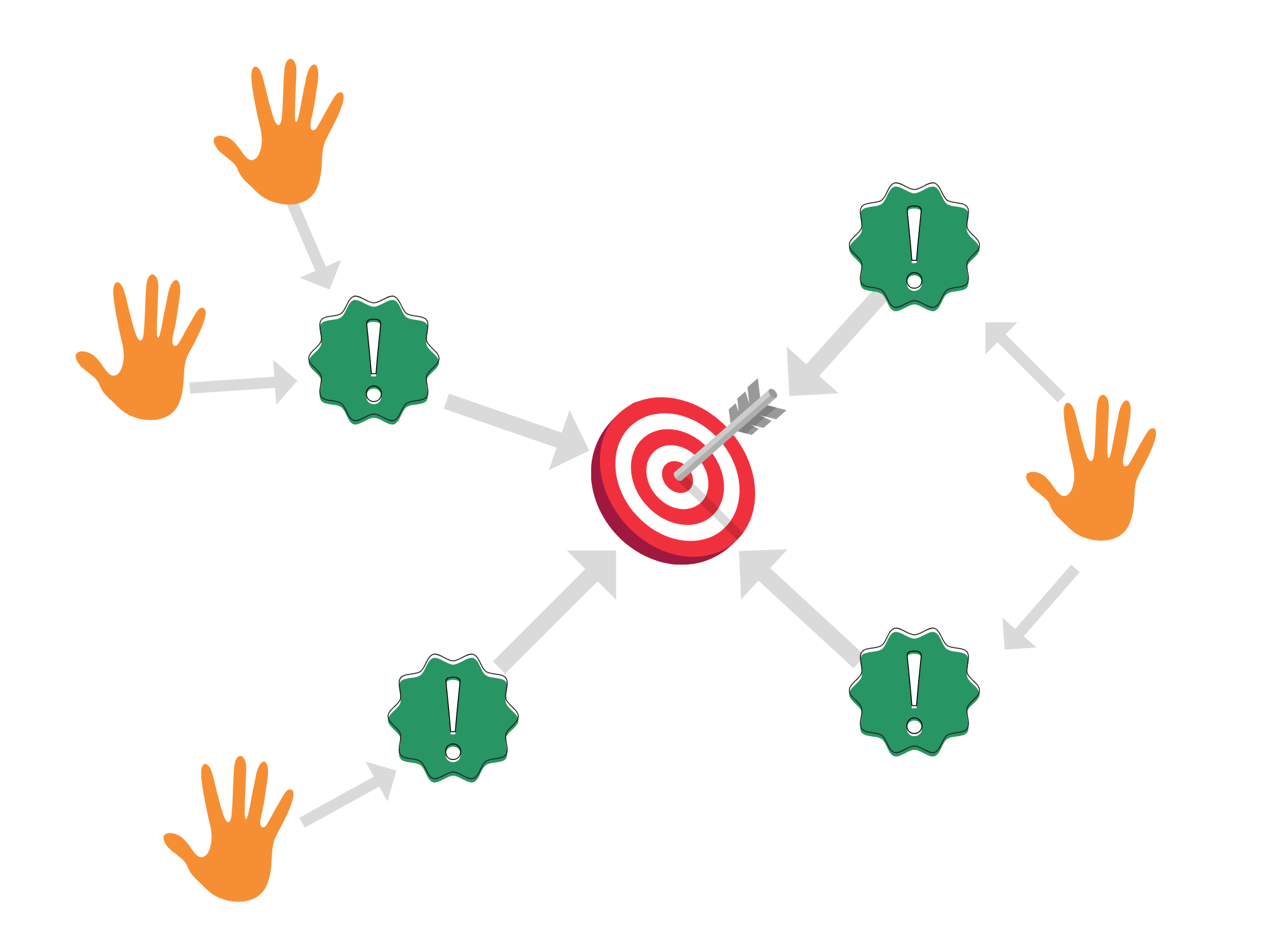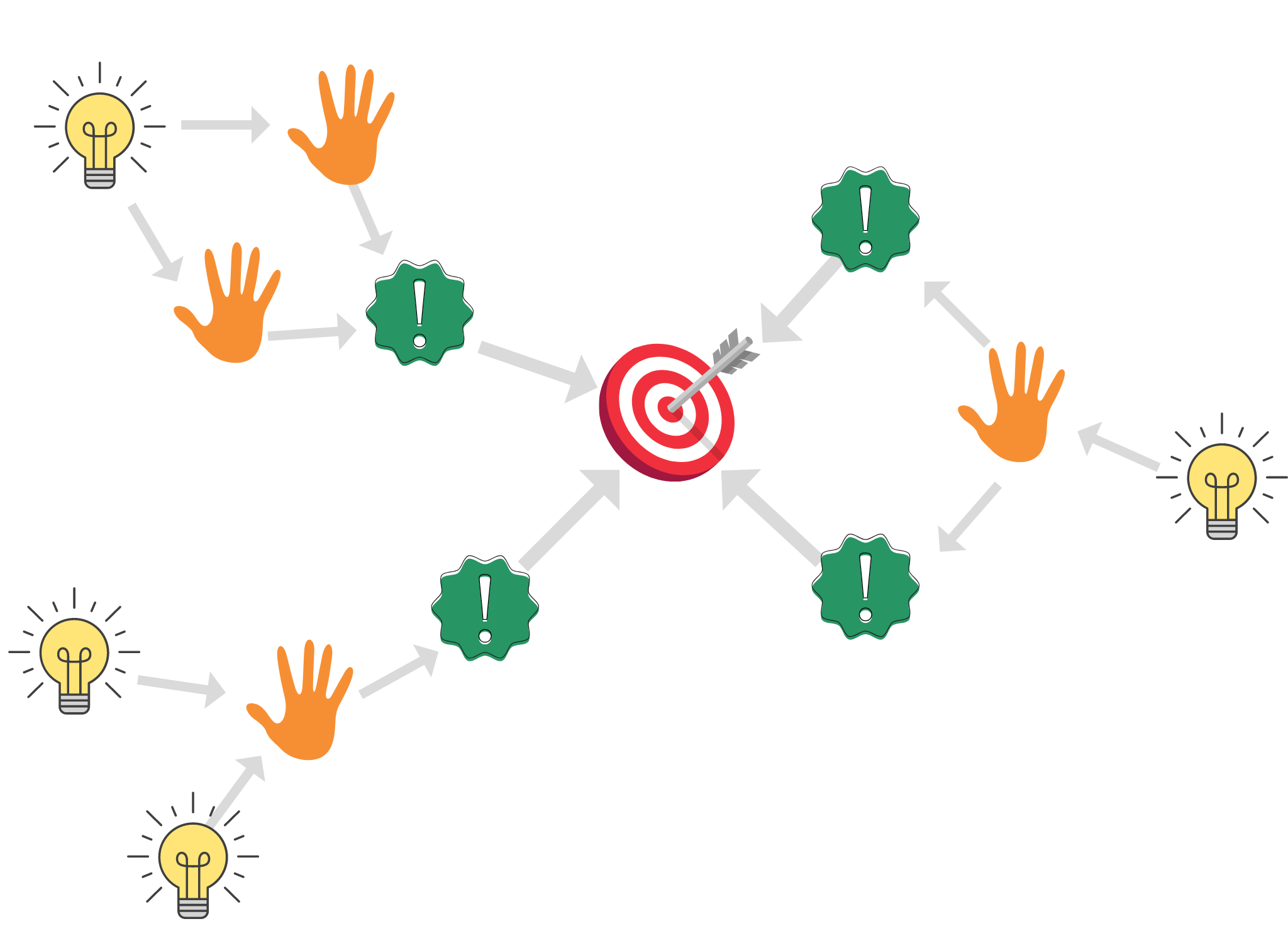🎯 Plan Meaningful Training with Action Mapping
Action mapping is a faster way to design business training, and it focuses on what employees are actively doing on the job rather than trying to teach them a lot of information. Naturally, this makes it far easier to measure improvements in employee performance, because the process clarifies exactly what employees should be doing to perform their jobs correctly.
Cathy Moore created the action mapping process, and she explains it thoroughly in her hands-on guidebook Map It. There are many benefits to using this approach in business, as stakeholders can easily see how this process benefits their organization. It also guides subject matter experts in outlining the most important information for effective learning, and it results in a map that can be used to easily create engaging scenario-based learning.
Action mapping is a solution against the typical info dumping that is common in education and more traditional training. Info dumping is throwing a lot of information at a learner and hoping that they will remember it for a quiz. This approach creates boring training that employees dread having to go through, and it does not end in positive results for the learner or the organization. With action mapping, the instructional designer does not spend any time focusing on what the learner knows or understands or anything that is going on in their mind that we cannot see.
Action mapping is a simple and collaborative four-step process:
Identify the business goal
Identify what people need to do and why they aren’t doing it
Design practice activities for the desired behavior
Identify the minimum information employees need to perform each activity
Identify the business goal
Collaborate with stakeholders to identify a business goal. When defining a business goal, ask, “what change do we want to create?” This should be a specific and measurable goal. That way you can see if the training made any change in this area. The goal is the target in the center of your action map.
Identify what people need to do and why they aren’t doing it
Next, list the actions that people must do to meet the business goal. This is often done collaboratively with subject matter experts (SMEs) and/or stakeholders. Only actions that you can observe people doing can be added to this list. Knowledge or understanding cannot be added in this step. Add these actions around the target business goal.
Identify the root cause for why people are not doing the actions, and ask what makes each action difficult. It could be a lack of knowledge, skills, or motivation, or it could be a problem in the work environment. Often it is a combination of things. Identifying the cause will allow you to see if training is the proper solution to the problem. Training can help solve gaps in knowledge and skills and it can be a part of a solution when motivation is the problem. However, it would not be a good solution for problems within the work environment.
Design practice activities for the desired behavior
Create practice activities for each action the employees must perform on the job. Design real-life scenarios for each practice activity that reflects what the employees would really experience on the job. This is often done using storyboards. Put your activities on the map with the correlating action.
Identify the minimum information employees need
Only identify the bare minimum of what people need to know to complete the task and add it to the action map. If the information does not directly help an employee perform the task, do not add it. These can be made into real-world job aids or scenario-based learning.
Scenario-based learning
A learner is put into a realistic situation that is just like what they could experience on the job. As they adventure through this experience, they have to make real-life choices based on the actions and practice activities created in the action map. The instructional designer can offer job aids and support to help the learner through the scenario.
When the learner makes the wrong decision, present them with the real-life consequence of this action. Make it as realistic as possible so they learn not to do this naturally. This could be that a customer became angry and gave a poor rating or the employee got injured and had to be sent to the hospital. Then give the learner a chance to try again. When the learner selects the correct action, they can advance through the scenario.
Check out examples of scenario-based eLearning in the portfolio section.
Reference
Moore, Cathy. blog.cathy-moore.com/action-mapping





